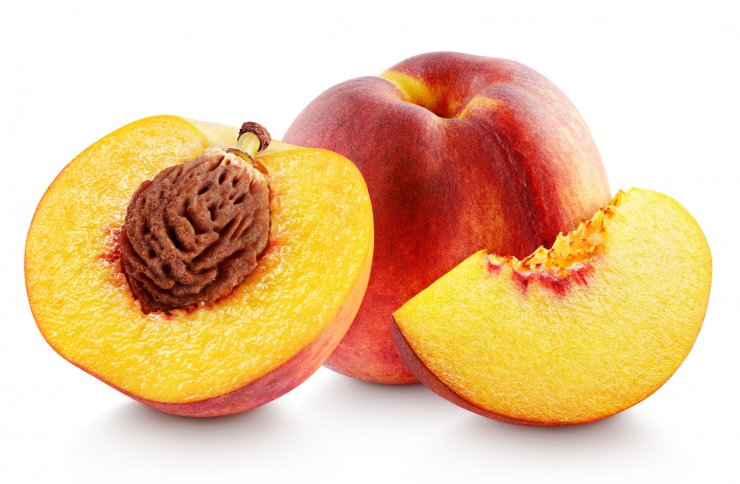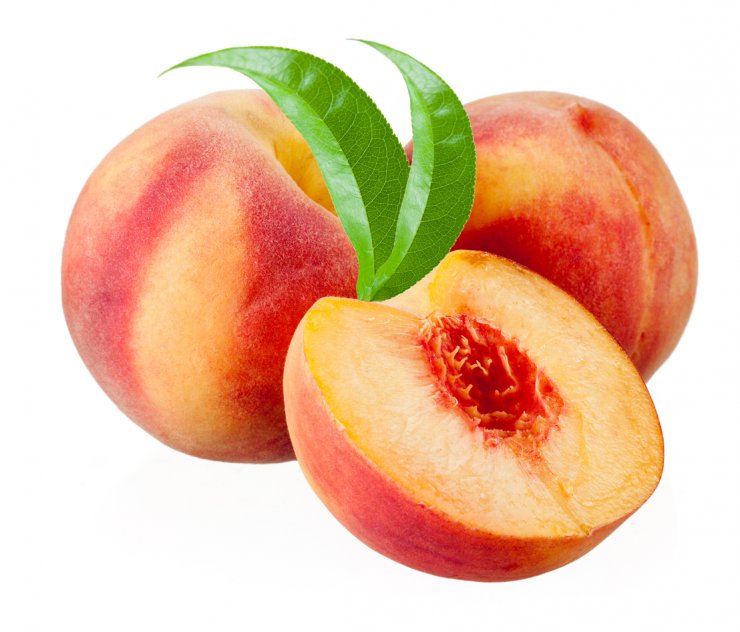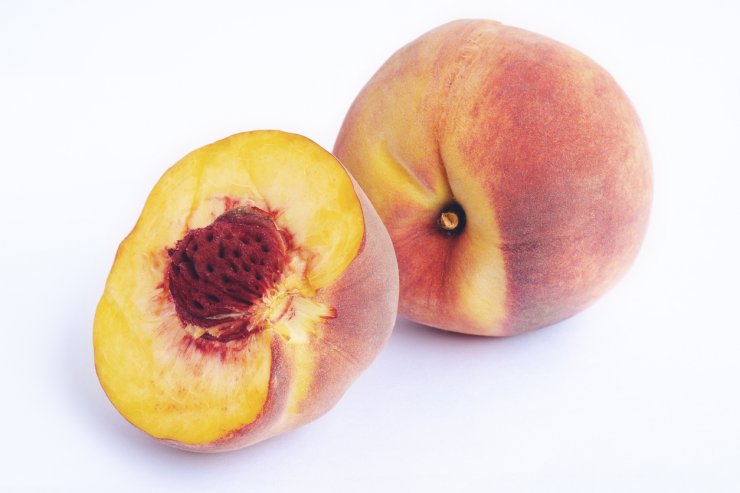
Peach and cross-section with stone
Those 2,000 varieties of peaches come in three types, all based on how easy it is to remove the flesh from the peach pit inside the fruit. All three can come with the familiar yellow flesh, or with white flesh, which some people believe is sweeter.
Note: A relative newcomer to the world of peaches is the donut peach. This can be one of the three types already mentioned but is distinguished from other peaches by its sunken middle. It may not look like a peach as you’d expect it to, but it’s still delicious!
The three types of peaches are:
Clingstone peaches
![Clingstone peaches look like all other peaches from the outside, but they stubbornly hold onto their pit when cut!]](https://foodgardening.mequoda.com/wp-content/uploads/2020/11/iStock-153921110-740x568.jpg)
Clingstone peaches look like all other peaches from the outside, but they stubbornly hold onto their pit when cut!]
Clingstone peaches are difficult to separate flesh from fruit. They ripen between May and August, and generally have yellow flesh that turns mild red to bright red close to the pit. Clingstones have a soft texture, high sugar content, and a juiciness that makes them ideal to eat as a snack and to incorporate in desserts.
Freestone peaches

Freestone peaches pull away from the pit easily
Freestone peaches, true to their name, have flesh that readily separates from the pit. Like clingstones, freestones are good to eat fresh as a snack, but their firmer texture, relatively low level of juiciness, and mild sugar content make them ideal for baking, freezing, and canning purposes. You can harvest freestone varietals between late May and October.
Semi-freestone peaches

Semi-freestone peaches are hybrids of clingstone and freestone peaches
This newer type is a hybrid of the clingstone and freestone peaches. They are good for general purposes, both fresh and canned. It is called semi-clingstone, for obvious reasons. Semi-freestones combine two of the most prized qualities of clingstones and freestones—a relatively high sugar content and juiciness along with flesh that doesn’t cling to the pit.
Our Plant Profiles are just a sampling of peach trees you might want to consider for your garden. When in doubt, consult with your local garden center for ideas and advice. And always test your soil before planting, as pH below 6 or above 7 will doom your trees to failure.
What types of peaches do you grow? Do you have a favorite? Please share your experiences and opinions.


 Previous
Previous


Hi, I am just setting up my garden having just moved into a new house in the south of England, I have a south facing wall against which want to plant a cooking apple, Conference pair, Victoria plum and a peach tree. If I use straining wires to achieve an espalier style, how far away from the wall should the straining wires be to encourage healthy growth and what advice would you give as to soil requirements ? I look forward to your reply.
Regards Mike Langbridge
Good luck on this endeavor! Each of these trees have different requirements, but all will enjoy mostly acidic to neutral side (most on the slightly acidic side).
Straining wires should be 8-12″ from the wall, or up to 24″ if it’s a wall near the foundation of your house, but you’ll need to continue to train your trees to bend backwards into the straining wires. You can also do this by spreading your roots outward when you plant, away from the wall. Hope all went well!